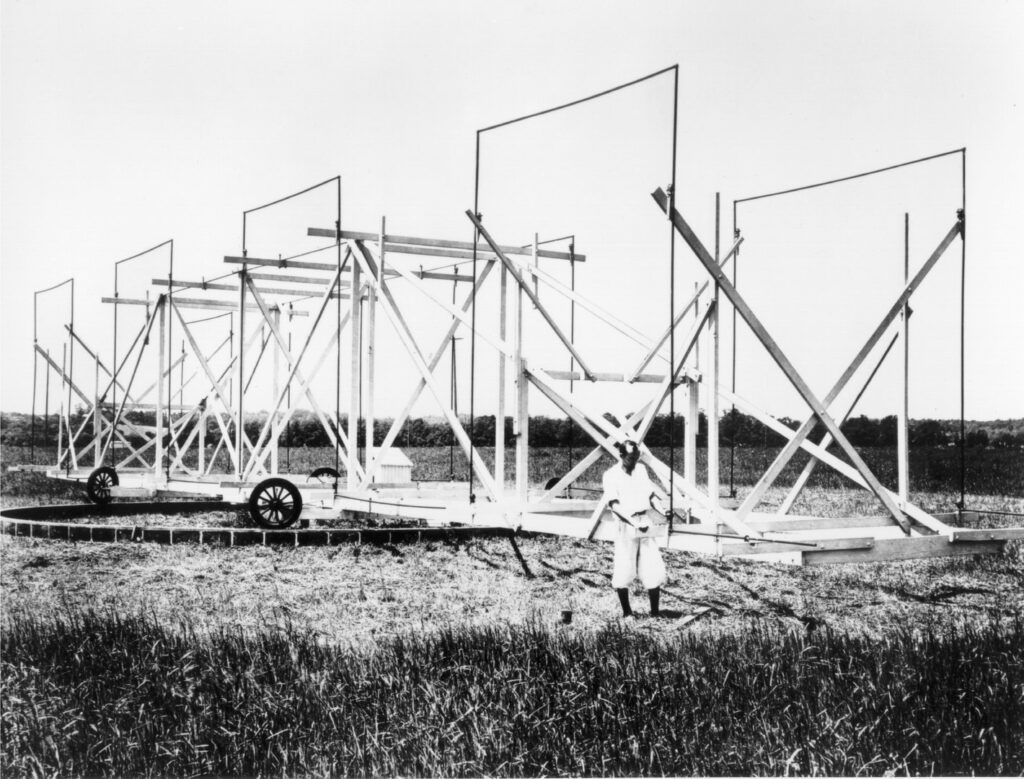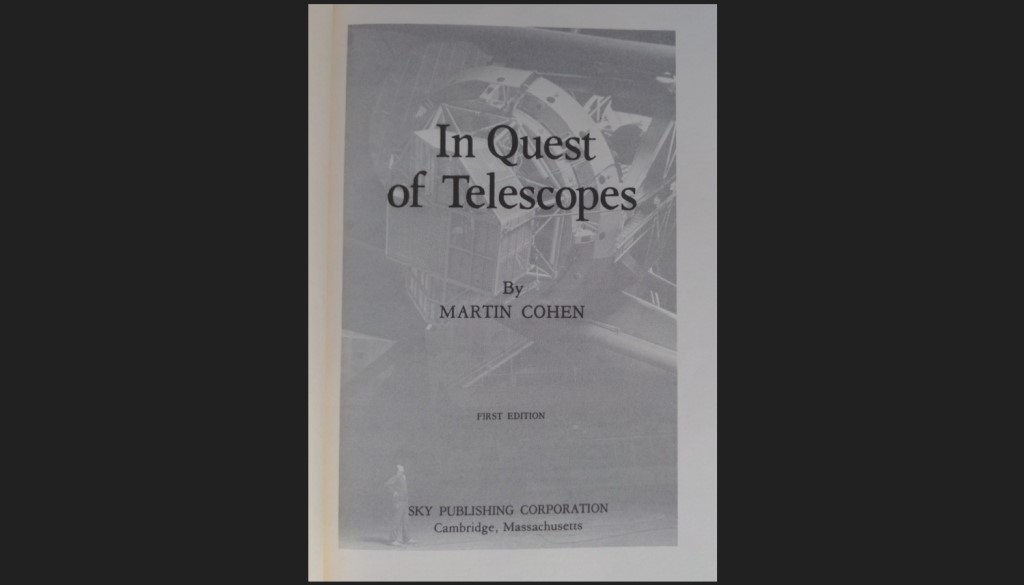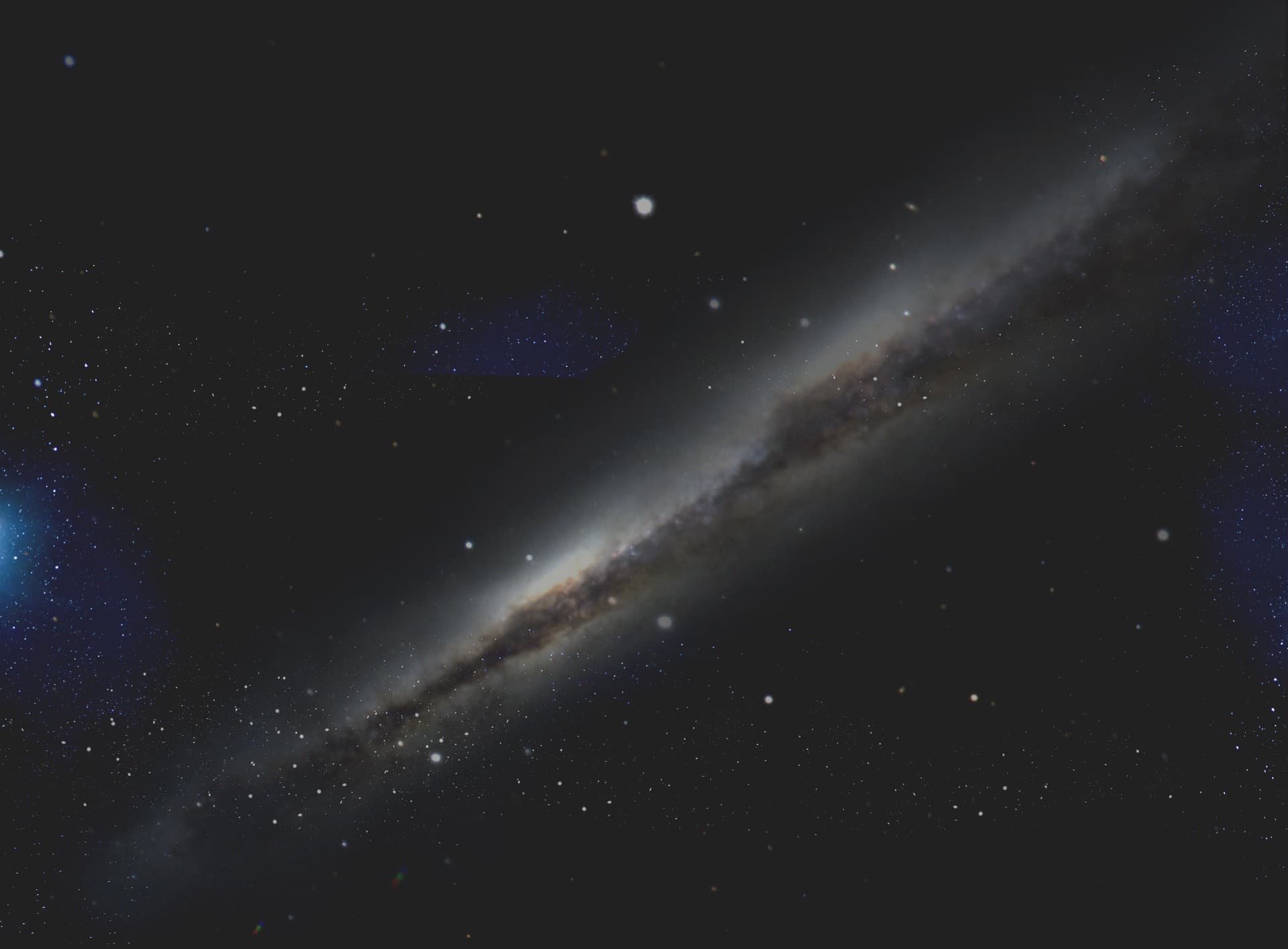I finally read Martin Cohen’s book, In Quest of Telescopes. Ever heard of it? It was published in 1980 by Sky Publishing Corp. of Cambridge, Massachusetts. It is a picture of astronomical research in the 1970s, seen through the eyes of Cohen, a junior astronomer at the time. Reading it in 2025, 45 years after it was published, led me to consider what it shows about changes in astronomy over 45 years — whether that be the 45 years after the book was published, or the 45 years prior to it being published.
Consider astronomy in 1935 vs. astronomy in 1980 vs. astronomy in 2025.
Much has changed in astronomy since 1980, but Cohen’s book struck me regarding how much things would have changed across the career of a senior astronomer looking backwards in 1980. Consider an astronomer who was a graduate student in 1935 (about the time when the telescopes of the Vatican observatory were moving from the Vatican walls up to Castel Gandolfo). By 1980, that student would be a pretty senior astronomer.
In 1935 astronomy was largely a business of visible light. Yes, a few years earlier Karl Jansky had built the first radio telescope and had detected radio signals from the Milky Way (or inferred that the signals he was detecting came from the Milky Way); and Grote Reber would be building a radio dish in a couple of years. But in 1935, astronomy meant visible light through telescopes (including big refractors), captured on photographic plates, not electronically.

By 1980, Cohen is describing radio dishes, infrared astronomy, and lots of electronics. Yes, “TV” cameras on telescopes, computer remote control of telescopes and instruments, and the use of computers to store data. What kind of computers? A Wang and a PDP appear in the book. Data is saved on big reels of magnetic tape. Racks of electronics are everywhere. If you have ever seen some episodes of the “Six Million Dollar Man” or “The Bionic Woman” TV shows, or maybe a James Bond movie from the late 1970s, you have some idea of what the “tech” pictured in Cohen’s book looks like. There were even space telescopes in 1980 — nothing like the Hubble, of course, let alone the JWST, but the first space telescope went up in the late 1960s. By contrast, humans were sending nothing into orbit in 1935.
And in 1980 astronomers could jet around the world to different observatories, like Cohen did! No jets in 1935.
There’s been tremendous progress in astronomy in the 45 years since Cohen’s book: Hubble, JWST, the Event Horizon Telescope that got images of a black hole, the rapid sharing of data via the World Wide Web. But the 45 years before the book were pretty amazing too, with the entire electromagnetic spectrum opening up to astronomers, and with the advent of computers, electronic detectors, and space travel.
Cohen went on to become a senior astronomer himself. He died in 2020. An AAS obituary described him as “a pioneer in the field of infrared astronomy” and “a highly cited researcher”. I had his book because I once asked for it as a present from my parents, and received it, when I was considering graduate school in astronomy in the late 1980s.
At that time the book would have been reasonably current. Oddly, I never read it. I maybe glanced over it a few times. It sat on my bookshelves for almost 40 years. And then this May, five years after Cohen’s death, I finally read it. Even back when I got the book, tape drives and Wang computers were on the way out, being replaced by better means of data storage and manipulation.
Also on the way out in some sense was the book’s publisher, Sky Publishing Corp. of Cambridge Massachusetts. It had been founded in 1939. It also published Sky & Telescope magazine up until the early 2000s. Then it was sold — all part of those changes in astronomy over the years.

